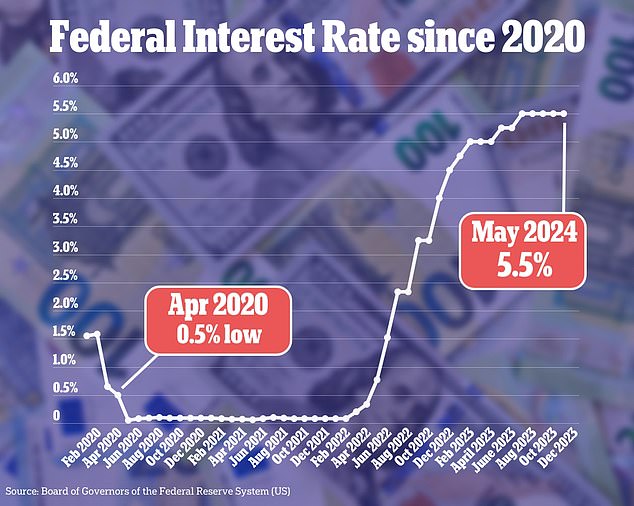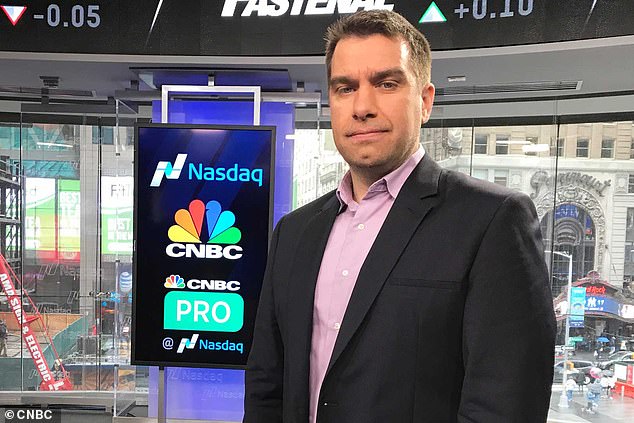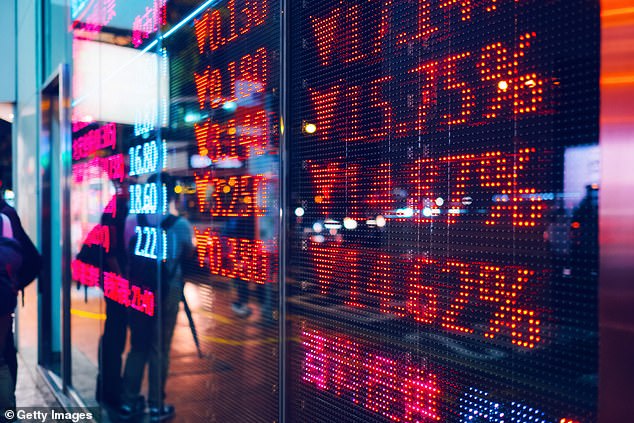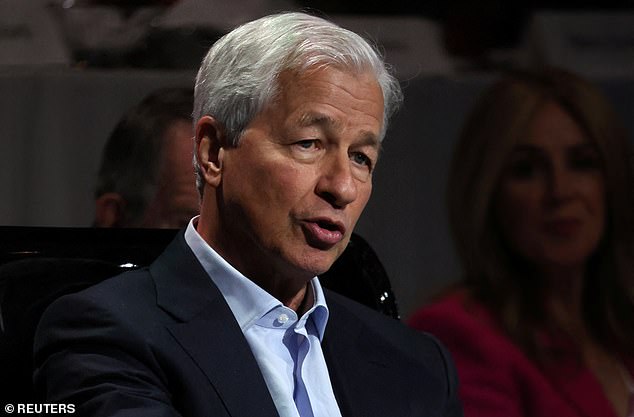Jamie Dimon, head of the world’s largest bank, JPMorgan Chase, has said he cannot rule out a “hard landing” for the US economy.
A “hard landing” occurs when a marked economic slowdown occurs after a period of rapid growth.
When asked about the worrying prospect during a CNBC In an interview this morning, Dimon said: ‘Could we actually see one? Of course, how could someone who reads history say that there is no chance?
America’s most influential banker also said the worst outcome for the U.S. economy would be “stagflation,” which is when inflation continues to rise but unemployment is high and growth slows.
Stagflation, last seen in the United States in the 1970s, is considered worse than a recession by economists. It would send stocks tumbling, hitting 401(K) plans and other retirement savings.
The billionaire banker said, in another interview last month, that he worried that the U.S. economy “is looking more like the 1970s than we’ve seen before.”
Dimon’s warning comes after an analyst who works for him at JPMorgan warned that the stock market could soon become volatile, despite hitting record highs this year.
JPMorgan Chase CEO Jamie Dimon has said he cannot rule out a “hard landing” for the US.
Since taking over in 2006, Dimon, 68, has built JPMorgan – which has retail and investment arms – into the world’s largest and most powerful bank, with $4 trillion in assets.
Speaking at JPMorgan’s Global China Summit in Shanghai, Dimon said: ‘I look at the range of outcomes and, again, the worst outcome for all of us is what you call stagflation, higher rates, recession.
‘That means corporate profits will go down and we’ll get through all of that. I mean, the world has survived that, but I think the odds have been greater than other people think.’
Despite this, he said the consumer is currently “in pretty good shape” and would still be even if the economy fell into a recession.
“Unemployment has been below 4 percent for a year and a half or two years,” he said.
‘Wages are rising at the lower end, which I think is a very good thing. Home prices are up, stock prices are up. “Even if we go into a recession, they’re in a pretty good situation.”
He added that consumer confidence levels are low, which he said is mainly due to inflation.
Newly released minutes from the latest Federal Reserve meeting showed that policymakers are increasingly concerned about inflation, with some members indicating there was a lack of confidence to begin cutting interest rates and easing monetary policy.
The central bank voted earlier this month to keep benchmark borrowing rates stable at a 23-year high of between 5.25 and 5.5 percent.
Dimon told CNBC he thinks interest rates could still rise “a little bit.”
‘I think inflation is harder than people think. “I think the odds are higher than other people think, especially since the huge amount of fiscal monetary stimulus is still in the system, and perhaps still driving some of this liquidity,” he said.

The Federal Reserve voted to keep interest rates steady at their current 23-year high at its last meeting earlier this month.
According to the CME FedWatch tool, about half of analysts forecast a 25 basis point cut for September.
The central bank had previously forecast a three-quarter percentage cut over the course of 2024, but has repeatedly insisted this will only happen if there is confidence that inflation is moving sustainably towards its 2 percent target.
But Dimon cautioned that while market expectations are “pretty good, they’re not always right.”
He added: ‘The world said it (inflation) would stay at 2 percent all that time. Then he says it will increase to 6 percent, then he says it will increase to four… He’s been 100 percent wrong almost every time. Why do you think this is the right time?
Higher inflation and higher rates are usually bad for the stock market. They mean consumers spend less while making it more expensive for businesses to borrow money.
A hard landing and recession would rattle stocks.
Dimon’s comments come after JPMorgan chief market strategist Marko Kolanovic issued a note on Monday forecasting that the S&P 500 could fall 20 percent to 4,200 points by the end of the year.
Kolanovic urged investors not to become optimistic even though the Dow Jones Industrial Average surpassed the 40,000-point threshold for the first time last week.
The S&P 500 also rose to 5,297 on Friday, marking 23 record closings so far this year, enthusing Americans about 401(K)s that contain funds invested in the stock market.

JPMorgan chief market strategist Marko Kolanovic urged investors not to become optimistic despite the stock market hitting all-time highs this year.

Kolanovic issued a note on Monday predicting that the S&P 500 could fall 20 percent to 4,200 by the end of the year.
Most Americans have at least a portion of their 401(K) and IRA invested in the Dow Jones, S&P 500, and Nasdaq.
They have benefited from a buoyant stock market over the past 12 months, and particularly since the beginning of this year.
Kolanovic reasoned that interest rates are likely to remain in restrictive territory for longer, combined with low-income consumers showing signs of weakness and high levels of geopolitical uncertainty, according to Business Insider.
“With share valuations so high, we do not view shares as attractive investments at this time and see no reason to change our stance,” Kolanovic said.
However, he is quickly becoming the exception among big bank analysts, after Morgan Stanley’s Mike Wilson – the only other notable bear left on Wall Street – turned bullish earlier this week.
Wilson, known as one of Wall Street’s most prominent pessimists, said he now sees the S&P 500 rising 2 percent by June 2025, marking a major change from his previous forecast that the index would fall 1 percent. 15 percent by the end of the year. .


